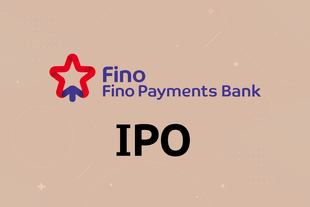Business
Fino Payments Bank IPO: Fighting For Deposits But Still India’s Top Payment Bank Network
Sourav Datta
Aug 12, 2021, 05:10 PM | Updated 05:10 PM IST
Save & read from anywhere!
Bookmark stories for easy access on any device or the Swarajya app.


Mumbai-based Fino Paytech, the parent company of Fino Payments Bank, has filed the draft prospectus documents with the Securities and Exchange Board of India (SEBI) for an initial public offering (IPO). The issue includes a fresh issue of equity shares aggregating up to Rs 300 crore and an offer for sale (OFS) of up to 1.56 crore equity shares by existing shareholders.
The company operates on an asset-light business model that relies on fee and commission income generated from the bank’s merchant network and strategic commercial relationships. For the financial year ended 2020, Fino had the largest payments bank network with 6 lakh banking touchpoints, followed by Airtel and India Post. In addition, as of 31 March 2021, around 55 per cent of the micro-ATMs deployed in India belong to FBCL.
Fino’s customers avail multiple products and services including various CASA (current and savings accounts) accounts, debit card transactions, facilitating domestic remittances, open banking functionalities, withdrawing and depositing cash and cash management services.
It offers these banking products and services to the un-served and underserved population of Indian society. Fino caters to the banking requirements of this population primarily through its pan-India merchant network. In order to reach its target market in a cost-effective and scalable manner, it relies on its widespread merchant network, where each merchant has access to the required technology to serve the banking and financial needs of its community.
The merchants are typically small neighbourhood shops and businesses, where the owners are from the local community and therefore, have a pre-existing familiarity with the people who frequent their outlets. Fino focuses on leveraging these relationships among the locals to grow its business without having to invest in a branch network.
The merchants also cross-sell other financial products like gold loans, bill payments, insurance, and recharges. Apart from CASA, almost all other businesses make money for the bank in the form of commissions. For the CASA business, the bank charges fees from its customers such as subscription fees, minimum balance penalty, cash transactions etc.
Income derived from all of FBCL’s financial products and services in the financial year 2019 (FY19), FY20 and FY21 was Rs 351.9 crore, Rs 673.3 crore and Rs 770.7 crore, respectively, representing a CAGR of approximately 30 per cent.
In FY21, it reported having 6 lakh merchants (comprising 52 per cent ‘own’ merchants and remaining merchants through the open banking network), and 17,269 active business correspondents or agents. Over 50 per cent of its own merchant base is from northern India with the remaining distributed across the other parts of the country.
Despite its widespread physical footprint, the bank lags its competitors in terms of the quantum of deposits collected. Paytm Payments Bank has a deposit base of Rs 2,870 crore followed by the India Post Payments banks which has deposits of Rs 800 crore.
In contrast, Fino has a deposit base of Rs 241 crore. The numbers show that Fino has been unable to build a deeper CASA base. Banks depend on CASA as a source of low-cost funding. For payments banks, CASA serves as a stable source of earnings.
So far, the company has remained unprofitable, however, like a typical pre-IPO company, the revenues and profits have seen a jump. The company has reported profits of Rs 20 crore for the financial year 2021, while it had reported a loss of Rs 32 crore in 2020, implying diluted earnings per share of Rs 2.62.
The company reported lower costs partially because of reduction in employee bonus expenses and rationalisation of rental expenses. The increase in revenue during the period also helped it breakeven.
Key Risks
Regulations: The company operates in a sector which is heavily regulated. Adverse changes in regulations or non-compliance to existing regulations can have a negative impact on the company. Similarly, the company must adhere to financial regulations set down by the regulator. These regulations can certainly limit the company’s growth potential.
Intense Competition: The sector is highly competitive with payments banks, commercial banks, non-banking financial companies, chit funds, unorganised sector, micro-finance companies and other financial companies looking to capture the same market as Fino. The company must constantly innovate to keep its market position intact.
Limited Operating History As A Payments Bank: The concept of payments banks is quite new and therefore, most payments banks in the country are still trying to find their footing. Fino has turned profitable only in financial year 2021, it remains to be seen whether it can continue demonstrating profitability for the coming years.
Reputational Risk: This business requires banks to have a strong and good reputation. A good reputation ensures higher deposits, more trust, and higher cross-selling of products. Any damage to the company’s reputation can result in a run on the bank and create financial issues for the organisation.





